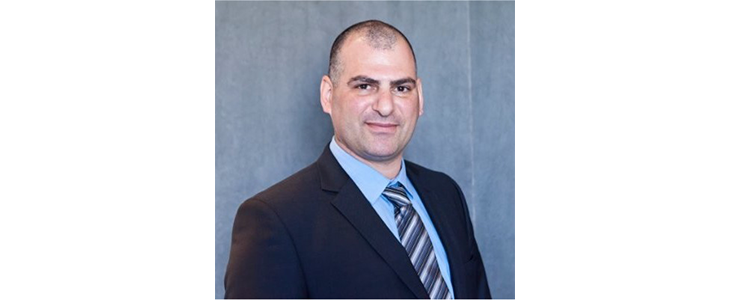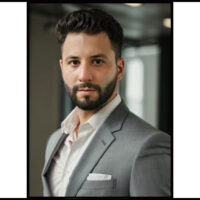
ACAMS Today chatted with Yaron Hazan for National Slavery and Human Trafficking Prevention Month. Hazan has 20 years of diverse and broad experience in financial crimes investigations and vast experience in anti-money laundering (AML) and counter-terrorist financing (CTF), with extensive knowledge in world class-standards across the financial sector.
Hazan is the vice president of regulatory affairs at ThetaRay, an Israeli-based Jerusalem Venture Partners portfolio company whose advanced artificial intelligence (AI)/money laundering platform focuses on financial crime prevention. Hazan is responsible for the engagement with regulators concerning financial crime risk management and the use of AI, laws and regulations, best practices, as well as the implementation of standards.
ACAMS Today: Could you please share what your current role entails and its impact on the fight against human trafficking (HT)
Yaron Hazan: I lead ThetaRay’s engagement in the public sector with regulators, financial intelligence units (FIUs), law enforcement agencies and financial institutions. I help these organizations understand the potential of technology to maximize information and data to fight severe crimes such as human trafficking and terrorism more effectively. I share my knowledge with these organizations by conducting educational sessions, advising and training regulators; in addition to participating in brainstorming sessions.
Within the private sector, I guide banks and fintechs in the operational controls needed to adopt an effective, risk-based approach for anti-money laundering (AML) controls. ThetaRay’s unique technology based on AI analysis of financial crime risk factors enables the financial sector to significantly improve its ability to pinpoint suspected cases of money laundering, including those related to human trafficking.
AT: What new HT methods developed by criminals should anti-financial crime professionals be looking for in 2022?
YH: Criminals know how banks and financial institutions apply financial crime controls, as well as how to bypass them. As a result, they develop extremely sophisticated money laundering schemes that are easy for banks to overlook. For example, they avoid certain thresholds that raise an alert and they set up businesses as well asshell companies using legitimate activities so that the new tools that search such companies and licenses are unable to identify them as illegitimate.
AT: What recommendations do you have for banks on stopping illicit profits from HT?
YH: Banks can take several steps, as follows:
First, look directly at the risks. For example, instead of applying general AML controls, use specific controls focused on the actual offenses. You cannot just apply transaction monitoring rules for all types of customers in an attempt to detect all types of crimes, it doesn’t work that way.
Once the real risks are mapped, banks must ask themselves, “How equipped are our current controls to fight such risks?” In most cases, the answer is “not very.”
The key question that banks should ask themselves is, “What can I do better?” The answer is to understand the characteristics of different crimes and their aligned financial activity, stop redundant processes and apply smart solutions.
AT: How can new technology help detect sophisticated money laundering schemes linked to HT?
YH: Machine learning and AI, applied smartly and responsibly, can be a game-changer. Instead of the bad guys always being one step ahead and anticipating the defenses of the good guys, AI can catch the criminals by surprise using sophisticated methods of detecting their illicit activity. It can also detect abnormal activity within data without biased rules.
AT: As a former point of contact for the FBI, what needs to improve to prevent terrorist financing crimes and HT globally?
YH: I’ve argued for years that putting terrorist funding and money laundering under the same umbrella is the wrong approach. Human trafficking is more like terrorist financing and not money laundering because the people who generate the transfers could very well be using legitimate funds. It’s only after the "payments" for such deals are completed that the money laundering begins. Plus, the transactional amounts in human trafficking are smaller, so most monitoring solutions do not even start to point in the right direction.
The crimes are different, and their related financial activity is not the same. We should not expect drug trafficking to look like terrorist financing or human trafficking.
One transaction or risk indicator is meaningless when fighting financial crimes. Only a comprehensive understanding of transactional behavior based on multiple parameters is a strong indicator. Banks must apply a multi-dimensional, risk-based analysis approach.
We need to fight the actual crimes instead of wasting so much effort in the wrong direction. The entire ecosystem should start taking responsibility and doing things better—much better.
AT: What is the most significant accomplishment you would like to achieve?
YH: [I would like] to have an impact on ending the global problem of human trafficking. First and foremost, I want to save human lives.
I also aim to bring about the adoption of effective financial deterrents against the bad guys so that human trafficking is no longer a profitable endeavor.
In sum, we must change the perception that human trafficking cannot be fought. Instead of financial institutions de-risking to avoid dealing with such criminality, they can manage the risk and promote financial inclusion and global growth and prosperity.
Interviewed by: ACAMS Today staff, ACAMS, editor@acams.org










